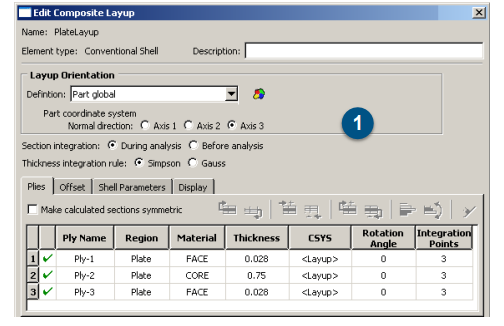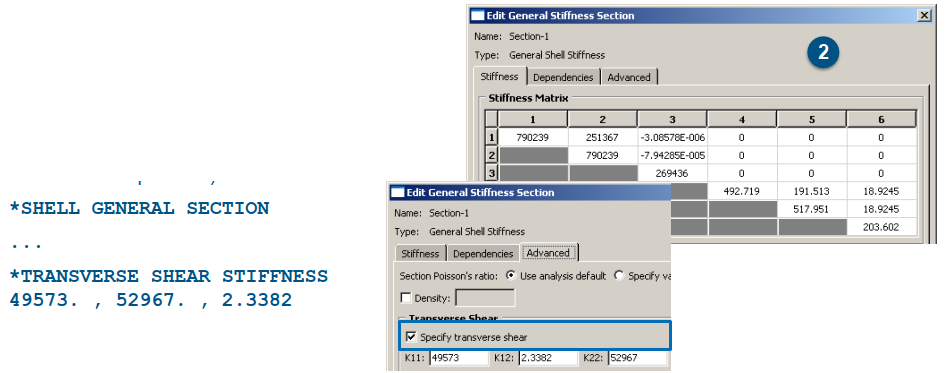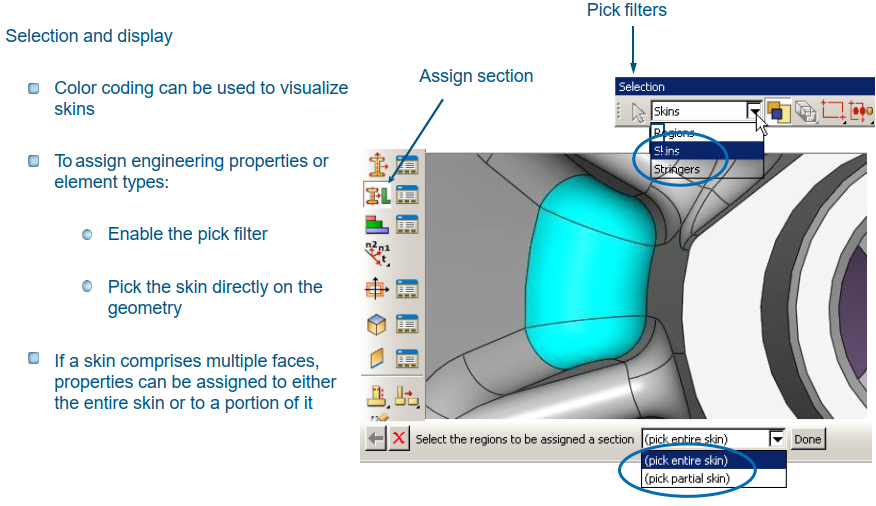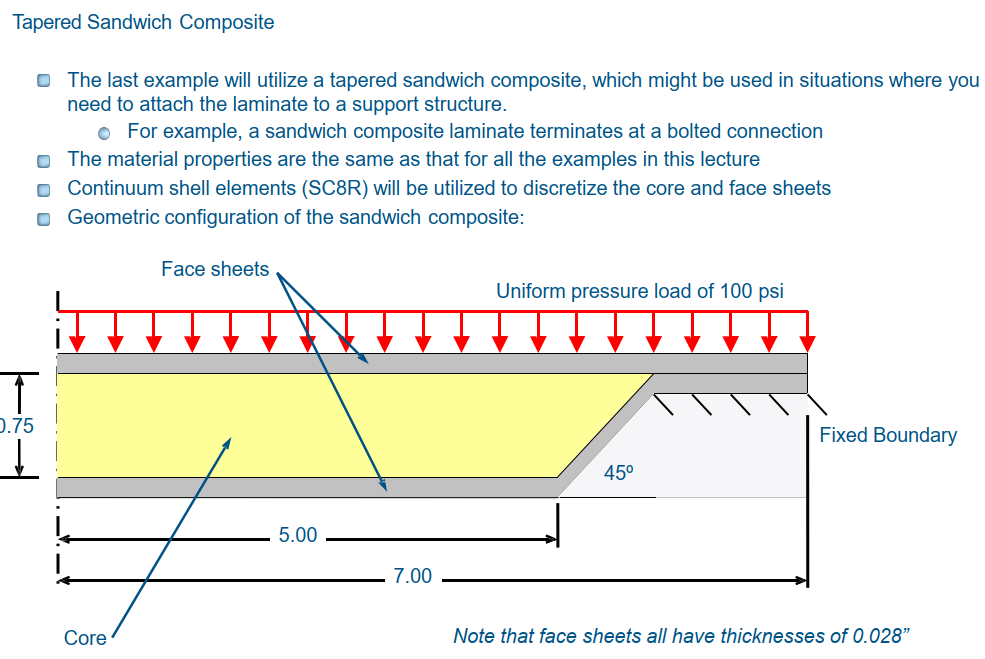Abaqus_Composite_夹芯板建模
介绍
夹心层合板一般由1个较厚的芯材+两侧的laminate faces sheet组成:

face sheet 一般具有抵抗全局弯矩的作用,具有很高的面内轴向刚度; + 高的拉伸/压缩强度和刚度; + 能抵抗冲击 + 光滑的表面 + 增加对环境和磨损的抵抗能力
芯材core能够增加face sheet的稳定性:
+ 低密度;
+ 提供剪切刚度(important);
+ 隔热和隔声
+ 可以是isotropic或者anisotropic
用作core的典型材料:Foams,Honeycombs;balsa wood;
Abaqus Usage
Typically, the inclusion of the core requires that transverse shear deformation of the structure be considered to obtain an accurate solution (even if the length-to-thickness ratio is larger than 20)
Abaqus 中单元类型选择: + "Thick shell"单元很适合用来建模夹芯板.例如:S4, S4R, S3R, S8R, SAX1, SAX2, SC8R, and SC6R; + continuum solid shell 单元也很推荐; + Regular continuum solid 单元(C3D8R,C3D20等)也可以使用,但厚度方向需加密来获得精确结果;
Model Core by Conventional or Continumm Shell element
使用S4R等单元时,可以用composite layup manager 或者常规的Material-->Section-->Assign Section来操作.这中方式abaqus会自动计算section stiffness;
也可以用SHELL GENERAL SECTION建模,直接指定ABD矩阵(此时假定了线性分析)和横向剪切刚度K11,K22,K12(TRANSVERSE SHEAR STIFFNESS)可以在CAE中指定,或者用*TRANSVERSE SHEAR关键字在Material中指定


使用Continumm shell建模时需要注意Stack of Layer in element,一个单元可以含有多个layer 或单个layer
C3D8R等单元就不赘述了,常规建模就行

Model Face Sheet by Skins in CAE GUI
在ABAQUS/CAE中,使用Skin(蒙皮)来建模face sheet是很方便的一个方法;skin 一般用来建模比较"薄"的外层结构,该结构和内部结构紧贴;
skin 可以建模蒙皮结构,skin会和已有的结构bond,并可以指定材料属性.A face of a three-dimensional solid part or of any two-dimensional part can be a skin;
All skin layers on a geometric face will have the same normal direction; skins on shell faces will inherit the normal direction from the underlying shell.
Shell or membrane elements that share nodes with the underlying continuum elements are generated.


Skin的选取技巧和展示:

Example
案例1

案例2
